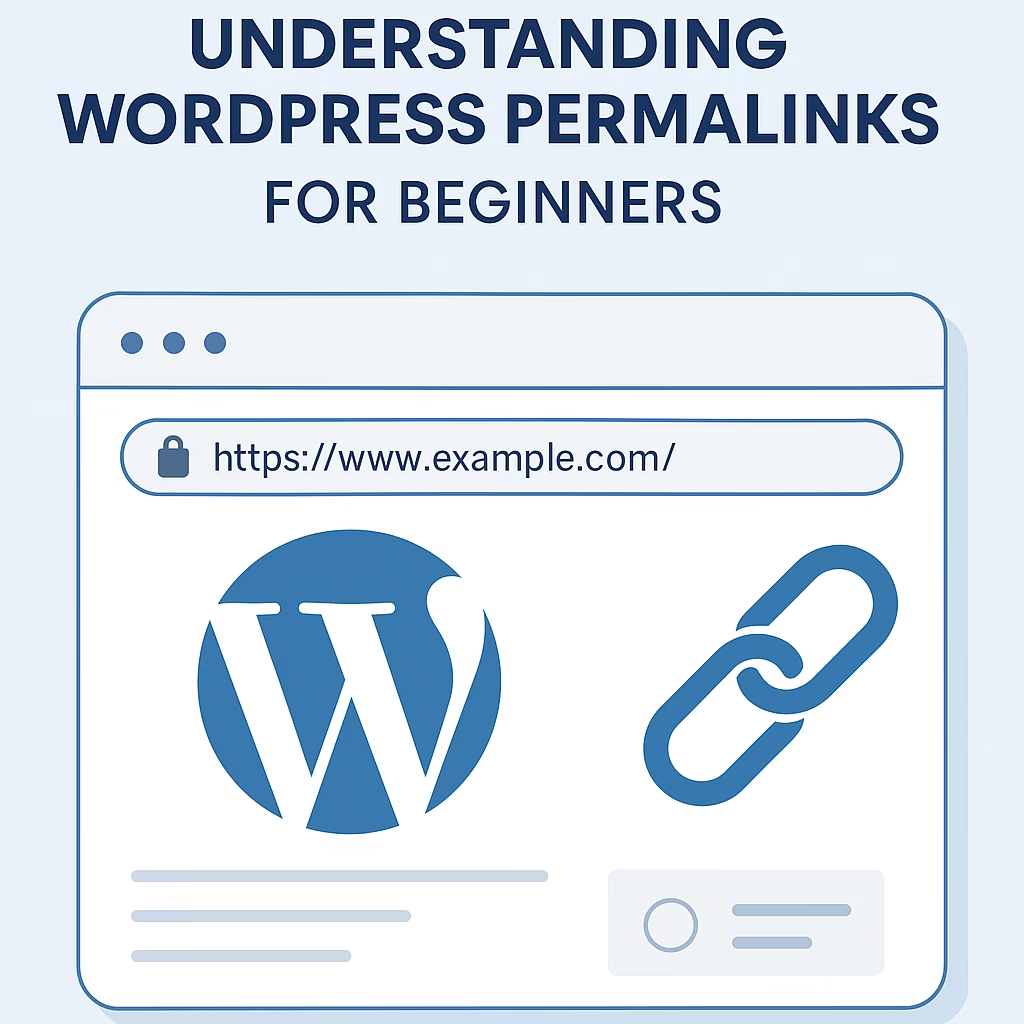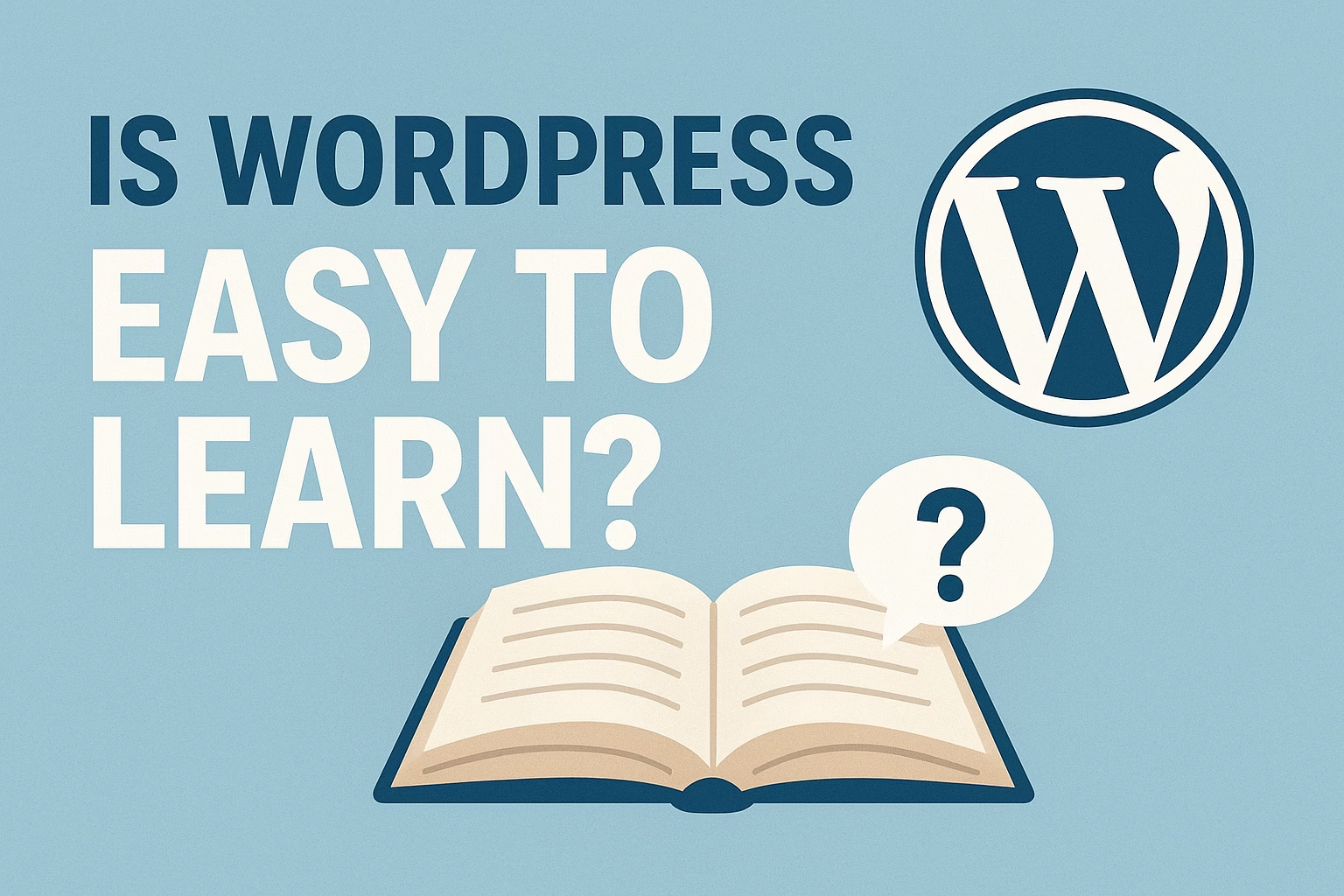A permalink is the permanent URL used to link to your individual blog posts, pages, or other content on your WordPress website. It’s the web address visitors use to access your content.
Permalinks play a crucial role in the structure and SEO of your WordPress website. In this blog post, we’ll explore what permalinks are, why they matter, and how the right permalink settings can improve user experience and search engine visibility. Whether you’re new to WordPress or optimizing an existing site, understanding permalinks is essential.
What Are Permalinks in WordPress?
Permalinks in WordPress are the permanent URLs to your individual blog posts, pages, categories, and other content types. These links are what people use to access your content directly, and they play a crucial role in search engine optimization (SEO) and user experience. WordPress allows you to customize permalink structures to make them clean, readable, and SEO-friendly.
1. Understanding the Structure of Permalinks
Permalinks can include elements like post names, dates, categories, and custom structures. For example, a permalink could look like example.com/2025/06/sample-post/ or simply example.com/sample-post/. The structure you choose determines how your URLs will appear and function.
2. Importance of SEO-Friendly URLs
Clean and keyword-rich permalinks help search engines understand the content of your pages. A readable URL such as example.com/wordpress-permalinks-guide performs better than a complex one like example.com/?p=123. This improves click-through rates and search engine rankings.
3. How to Change Permalink Settings in WordPress
You can modify your permalink structure by going to Settings > Permalinks in the WordPress dashboard. WordPress offers several default structures, including plain, day and name, month and name, numeric, post name, and custom structure. Choose the one that best fits your content and SEO goals.
4. Custom Permalinks for Posts, Pages, and CPTs
Each post type in WordPress—like blog posts, pages, and custom post types (CPTs)—can have its own permalink format. Using plugins or custom code, you can define unique URL structures for different content types to enhance usability and organization.
5. Best Practices for Using Permalink
- Keep URLs short and descriptive
- Use hyphens to separate words
- Avoid changing permalinks after publishing (unless absolutely necessary)
- Redirect old URLs if changes are made to maintain SEO value
- Ensure consistency across your website
Why Permalinks Matter for SEO and User Experience
Permalinks play a vital role in how both users and search engines interact with your website. A well-structured permalink enhances clarity, improves navigation, and boosts your site’s SEO performance. Whether you’re running a blog, an online store, or a business site, optimizing your permalinks can significantly impact visibility and usability.
1. Boosting Search Engine Visibility
Search engines use permalinks to understand the context of your content. URLs with relevant keywords (e.g., yourwebsite.com/wordpress-seo-tips) help Google and other search engines rank your pages more accurately. Descriptive URLs are easier for algorithms to crawl and index, leading to better ranking potential.
2. Improving User Click-Through Rates
A clean and readable permalink encourages users to click your links in search results or on social media. For example, users are more likely to trust and click on example.com/why-permalinks-matter than example.com/?p=456. A well-crafted URL increases engagement and drives more traffic to your site.
3. Enhancing Website Navigation and Sharing
Permalinks that are simple and logical make it easier for visitors to understand your site’s structure. They’re also easier to remember and share, especially if the URLs reflect the content topic. This improves the overall user experience and makes your content more accessible.
Default WordPress Permalink Structures Explained
1. Plain
This is the default setting in a fresh WordPress installation. It looks like:example.com/?p=123
This structure uses query strings and is not user- or SEO-friendly. It’s best used only for temporary or internal testing purposes.
2. Day and Name
Format: example.com/2025/06/02/sample-post/
This structure includes the full date and post name. It’s suitable for news websites or blogs that post time-sensitive content but may create unnecessarily long URLs for evergreen content.
3. Month and Name
Format: example.com/2025/06/sample-post/
Similar to Day and Name, this structure includes the month and post name. It’s a cleaner alternative for blogs that still want to highlight the publish date without being overly detailed.
4. Post Name
Format: example.com/sample-post/
This is one of the most popular and SEO-friendly options. It’s short, clean, and includes keywords from the post title, making it ideal for most websites, including portfolios, businesses, and content-driven blogs.
How to Change Permalink Settings in WordPress
Changing permalink settings in WordPress allows you to control how your URLs appear, which affects SEO, usability, and overall site structure. WordPress provides easy options to modify permalink formats through the dashboard. Whether you want to use post names, include dates, or create custom structures, updating permalinks is a straightforward process that can make your site more user-friendly and search engine optimized.
1. Accessing the Permalink Settings
To begin, go to your WordPress dashboard, then navigate to Settings > Permalinks. This page allows you to choose a preferred permalink structure or create a custom one. All changes made here will apply site-wide.
2. Choosing a Predefined Structure
WordPress offers several predefined structures such as Plain, Day and Name, Month and Name, Numeric, Post Name, and Custom Structure. Most users prefer the Post Name structure for SEO benefits and readability.
3. Creating a Custom Permalink Structure
You can create a custom URL format using available tags like %postname%, %category%, or %author%. For example, a custom structure like /blog/%postname%/ can help differentiate blog content from other post types.
4. Permalink Settings for Pages vs. Posts
Unlike posts, WordPress pages do not follow the same permalink tag rules. Page URLs are typically structured based on the page title and hierarchy, such as example.com/about-us/ or example.com/services/web-design/.
5. Setting Up Permalinks for Custom Post Types
If you have custom post types (CPTs), you can define unique permalink structures for them using plugins like Custom Post Type UI or custom code. This helps organize your content better and improve site navigation.
6. Save Changes and Flush Rewrite Rules
After selecting or modifying your permalink structure, click the Save Changes button. WordPress will automatically flush the rewrite rules, updating your site’s URL structure. Always double-check that your links are working correctly after making changes.
Best Practices for Choosing SEO-Friendly Permalinks
Creating SEO-friendly permalinks is crucial for improving your site’s visibility in search engines and enhancing user experience. Well-structured URLs help search engines understand your content and make it easier for users to navigate and share. By following a few simple best practices, you can optimize your permalink structure for better performance and ranking.
1. Keep URLs Short and Descriptive
Short URLs are easier to read, remember, and share. Instead of using long, complicated strings, use a few meaningful words that reflect the page content. For example, use example.com/seo-tips instead of example.com/the-best-seo-tips-for-wordpress-in-2025.
2. Use Keywords in the URL
Include relevant keywords in your permalink that relate to the topic of the page. This improves the chances of ranking higher in search results and gives users a clear idea of what the page is about. However, avoid keyword stuffing—keep it natural.
3. Avoid Using Dates or Numbers
Dates can make content seem outdated even if it’s still relevant. Numbers can confuse users and don’t usually contribute to SEO. Stick to plain words unless the date or number is essential to the content (e.g., event pages or reports).
4. Use Hyphens to Separate Words
Search engines treat hyphens (-) as word separators, making it easier for them to read and index your URLs. Avoid underscores (_), as they are not recognized as separators in the same way. For example, use example.com/seo-guide instead of example.com/seo_guide.
5. Don’t Change URLs After Publishing
Once a URL is published and indexed, changing it can break links and hurt SEO unless properly redirected. If you must change a permalink, always set up a 301 redirect from the old URL to the new one to preserve link equity and avoid 404 errors.
Common Mistakes to Avoid When Using Permalinks
Permalinks are a fundamental part of your website’s structure and SEO, but mistakes in their setup or management can lead to broken links, poor search rankings, and bad user experience. Avoiding common permalink pitfalls ensures your site remains accessible, well-organized, and optimized for both users and search engines.
1. Using the Default Plain Permalink Structure
The default ?p=123 format is not user-friendly or SEO-optimized. It doesn’t provide any meaningful information about the page content and can negatively impact your search rankings and user trust.
2. Changing Permalinks Without Redirects
Altering permalink structures after your site has been indexed without setting up proper 301 redirects can lead to broken links, 404 errors, and loss of SEO authority. Always implement redirects when changing URLs.
3. Including Stop Words in URLs
Words like “and,” “or,” “but,” and “the” clutter URLs and add unnecessary length. Removing common stop words helps keep URLs concise and focused on important keywords.
4. Using Underscores Instead of Hyphens
Search engines treat hyphens (-) as word separators but do not treat underscores (_) the same way. Using underscores can confuse search engines and reduce URL readability.
5. Making URLs Too Long or Complex
Long URLs with multiple folders, parameters, or excessive words are hard to read and share. They can also get truncated in search results, losing key information. Aim for simplicity and clarity.
6. Not Testing Permalink Changes
After updating permalinks, failing to test all important links can result in unnoticed broken pages or navigation issues. Always verify your URLs work correctly and that internal links point to the right destinations.
Final Thoughts
Permalinks might seem like a small detail, but they play a vital role in shaping your WordPress website’s SEO, usability, and overall professionalism. By choosing the right permalink structure and keeping your URLs clean and descriptive, you help both search engines and visitors navigate your site more effectively. Remember to plan your permalink settings carefully before publishing, and avoid frequent changes to prevent broken links. With a solid understanding of permalinks, you’re well on your way to building a WordPress site that’s both user-friendly and search-engine optimized.
Need help rebuilding your layout? Contact me and I’ll help you get your site back on track.




